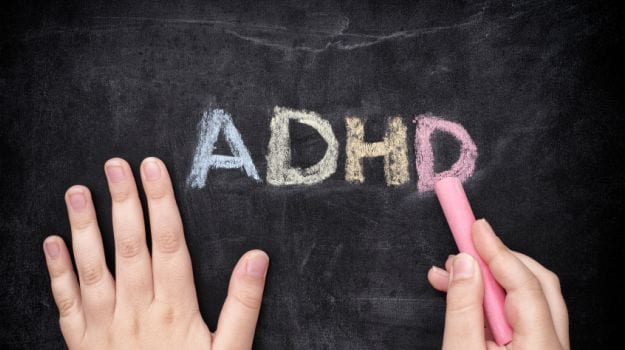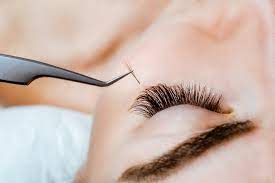
There seems to be a never-ending stream of research reports about attention deficit/hyperactivity disorder, or ADHD – the most commonly diagnosed neuro-behavioral disorder in U.S. children – and how it affects young people.
The latest is a study from the prestigious Mayo Clinic in Minnesota, which found that girls with childhood ADHD were “at a two-fold risk” of becoming obese compared with girls without the condition. Another recent report found increasing reports of ADHD among Hispanics, especially girls. The first national survey of children diagnosed with ADHD, released in 2015, found nearly half of those in preschool were on medication for the condition.
Yet while ADHD is a popular subject for the research community, many teachers and parents still do not understand the condition and all the ways it affects young people at home and in school. Many think it is simply about kids who can’t focus on their work or sit still, but there is a great deal more to it, experts say, and student achievement in school suffers because the condition is misunderstood. (One 2014 nationally representative survey found that nearly 50 percent of mothers of ‘tween’ girls diagnosed with ADHD had at first misidentified the cause of their children’s problems and delayed getting medical help.)
What exactly is ADHD? It is a a brain-based medical disorder that affects the behavior of people across age, gender, intelligence and socio-economic lines. Kids with ADHD may daydream a lot, talk too much, fidget, frequently forget and lose things, display impulsivity and risk-taking behavior and have trouble making transitions. According to the Centers for Disease Control:
In 2011-2013, 13.3 percent of boys and 5.6 percent of girls aged 4-17 had ever been diagnosed with ADHD.
In 2011-2013, the prevalence of diagnosed ADHD among children aged 4-17 was 11.5 percent among non-Hispanic white children, 8.9 percent among non-Hispanic black children, and 6.3 percent among Hispanic children.
In 2011-2013, the prevalence of diagnosed ADHD among children aged 4-17 was highest among children with public insurance (11.7 percent) and lowest among uninsured children (5.7 percent). Among children with private insurance, the prevalence of diagnosed ADHD was 8.6 percent.
In 2011-2013, 10.4 percent of children aged 4-17 in families with incomes less than 200 percent of the federal poverty threshold had ever been diagnosed with ADHD compared with 8.8 percent of children in families with incomes at 200 percent or more of the poverty threshold.
I talked with Ned Hallowell, one of the country’s foremost experts on ADHD, about what parents and teachers need to know — but too often don’t understand — about how ADHD affects young people. Hallowell is a child and adult psychiatrist and the founder of the Hallowell Center for Cognitive and Emotional Health in Sudbury, Massachusetts, and New York City, and was a member of the faculty of the Harvard Medical School from 1983 to 2004 until he began working full-time on his clinical practice, lectures and writing. He is the author of a number of books, including, with co-author John Ratey, “Driven to Distraction,” “Answers to Distraction,”and “Delivered from Distraction.” He also co-authored, with Peter S. Jensen, “Superparenting for ADD.”
I asked Hallowell the following questions:
When I talk to parents and teachers, I often think they don’t understand the complexities of ADHD. They think it is simply about focus, or the inability to sit still. There is more to it, right? Please explain what it is and how it manifests in young people. * Is ADHD officially considered a learning disability or not, and if not, why not?
– When does ADHD usually present itself?
– Has there been any progress made in diagnosing ADHD?
– Any idea what causes it?
– Does it ever go away?
Here’s his response in which he incorporates answers to all of the above questions:
“As you correctly noted in your question, there’s much, much more to ADD (I call it ADD, but the technically correct designation is ADHD with a subtype that does not include the H for hyperactivity) than just not being able to sit still, follow directions, and pay attention.
“As you correctly noted in your question, there’s much, much more to ADD (I call it ADD, but the technically correct designation is ADHD with a subtype that does not include the H for hyperactivity) than just not being able to sit still, follow directions, and pay attention.
“In fact, what we call ADD (a terrible term, as it is not a deficit of attention but rather a wandering of attention, and it is not a disorder in my opinion but rather a trait; if you manage it properly it can turn you into a phenomenal success, but if you don’t it can ruin your life, which makes it unique and fascinating) is really a type of mind, genetically transmitted, and composed of a wide array of complex and often contradictory tendencies.
“For example, the signature symptom, attention, may either occur in abundance or wander off. People with ADD can super-focus when they are really interested, as in playing video games, an instrument, a sport, or studying a subject they love; or they can wander off, when they lose interest, when the book is boring, the teacher is boring, Grandma is boring, or the car ride is too long. This inconsistency of attention can lead to inconsistent performance and underachievement in school (or, for adults, at work). Too often, teachers and parents (and bosses) jump to what I call “the moral diagnosis,” and ascribe the underachievement to lack of effort or laziness, which leads to lectures, punishments, and a gradual infection of the spirit with the viruses of shame and diminished sense of self. In fact, the correct diagnosis is of a brain difference, not a brain deficit, and certainly not a moral failing.
“Other common symptoms include: impulsivity, restlessness, poor organizational skills, tendency to procrastinate, tendency to be willful and stubborn, low tolerance of frustration, tendency to have many projects going on at once with trouble with follow-through, tendency to multi-task, trouble following sequential directions, trouble with authority, strong desire to be free and independent, love of excitement and danger, poor tolerance of boredom, trouble in showing one’s work, heavy reliance on intuition, and a desire to strike out in new directions, regardless of what is the order of the day.
“On the positive side, which people rarely discuss, people with ADD are the people who founded this country. They tend to be visionaries, dreamers, explorers, inventors (Edison was a classic), path-finders, discoverers, entrepreneurs (almost all entrepreneurs have ADD), creative types, original thinkers, paradigm breakers, trend-setters, free thinkers, as well as being big-hearted, trusting, generous, and fun.
“Paradoxes abound. They are hard to rein in, but they love to lead. They can’t be counted on, but they are there in a crisis. They don’t read the directions, but they are the first to put the toy together. They drive you crazy with their inability to follow through, but they charm the pants off you.
“Diagnosis rests on taking a history both from parents and child as well as from school teachers. The diagnosis shines through in the history. Then you can get neuropsychological testing to supplement the history. There is no definitive test for ADD. The combination of history, as taken from multiple sources, with neuropsych testing is the best approach.
“Treatment includes, first of all, education. MAKE SURE the child and parent understand this is not a “deficit disorder,” but rather a condition that can be associated with tremendous success. I have millionaires and billionaires in my practice. There are numerous Academy Award winners who have ADD, Pulitzer Prize winners, CEO’s, Nobel Prize winners, Generals, Admirals, world class chefs, and leaders in every field who have ADD. The real disabilities are shame, fear, and believing you are a loser.
“The next components of treatment should include some form of coaching or tutoring to improve organizational skills and so-called executive functions; lifestyle modifications, as proper exercise, sleep, and nutrition are key; an introduction to meditation or mindfulness training, as this has been proven to significantly improve the problematic symptoms of ADD; positive human connections, or what I call “the other Vitamin C, Vitamin Connect,” as these kids often get nothing but corrections, tutoring, and reprimands all day; and finally medication, which when used properly is safe and dramatically effective in 70-80% of cases. Be sure you see an experienced doctor so as to get proper education and delivery of medication.
“ADD tends to persist throughout life, although many people learn to compensate so well it seems they no longer have it as adults.
“People argue as to whether ADD is a learning disability or not, but it is more a semantic argument than a substantive one. ADD – involuntarily inconsistent attention – can certainly make learning in areas where one is not interested more difficult. If that defines it as a learning disability, then it is. However, the advantages it so often confers – intuition, creativity, outside-the-box-thinking – would cast it as a learning advantage. As do so many questions in the world of ADD, this question can have contradictory, equally correct answers.
“To be clear: undiagnosed and untreated, ADD can ruin a life. It can ruin school, ruin childhood, ruin a career, ruin a marriage, ruin everything. The prisons, the halls of the addicted and unemployed, the multiply divorced, the depressed, and the people who attempt and complete suicide, all are over-represented by ADD.
“But, so are the people who change the world for the better: the entrepreneurs, the entertainers, the innovators, the visionaries, and the creatively gifted in all fields.
“All of this combines to make this condition fascinating but also of great import. The stakes are high. Early diagnosis – around age 5 or 6 – enhances the chances of the best outcomes. Embracing a strength-based model enhanced the chances of best outcomes. A life rich in positive human connections enhances the chances of best outcomes.
“For a condition as common as ADD is – at least 5 percent of the population, and, depending upon how it is defined, much higher – we would do well to take it seriously, and do all we can to ensure proper diagnosis and treatment for people of all ages.”
Recognizing ADHD in children can be difficult. Here, from Hallowell’s website, is some information that may help parents determine whether their child needs to be seen by a mental health professional (and which I am using with permission):
“Diagnosis is made primarily by reviewing one’s history; there is no foolproof “test” for ADHD (the preferred abbreviation for both disorders). In arriving at an accurate diagnosis it is important to look for other problems that may occur along with ADD, such as low self-esteem, depression, substance abuse or family turmoil. While the following lists may give you an idea if an evaluation for ADHD is appropriate, we strongly recommend getting diagnosed by a mental health professional if you suspect that you or your child may be ADHD.”
ADHD IN CHILDREN
If your child exhibits at least eight of the following behaviors for at least a six-month period, consider an evaluation by a team of ADHD professionals:
Often fidgets with hands or feet or squirms in seat (in adolescents or adults) and may be limited to subjective feelings of restlessness. Has difficulty remaining in seat when asked to do so. Is easily distracted by extraneous stimuli. Often blurts out answers to questions before they have been completed. Has difficulty following through on instructions from others. Often shifts from one uncompleted activity to another. Has difficulty playing quietly. Often talks excessively. Often interrupts or intrudes on others. Often does not seem to listen to what is being said to him or her. Often loses things necessary for tasks or activities at school or at home. Often engages in physically dangerous activities without considering possible consequences.
[“source-ndtv”]










